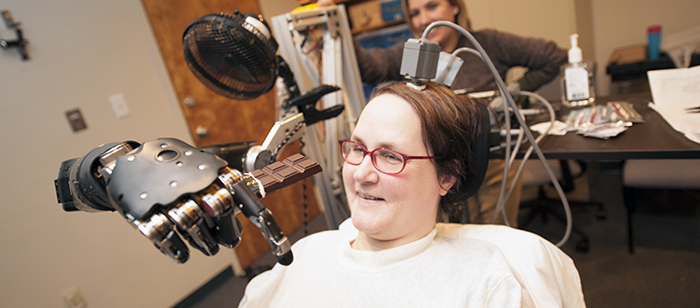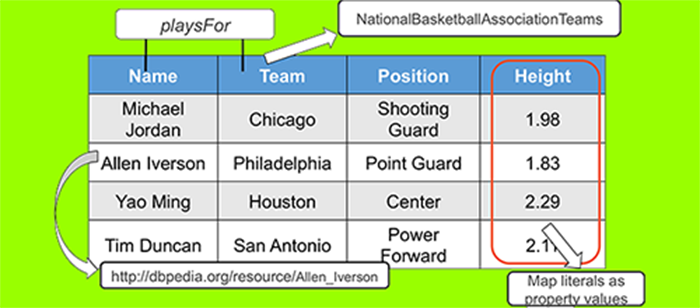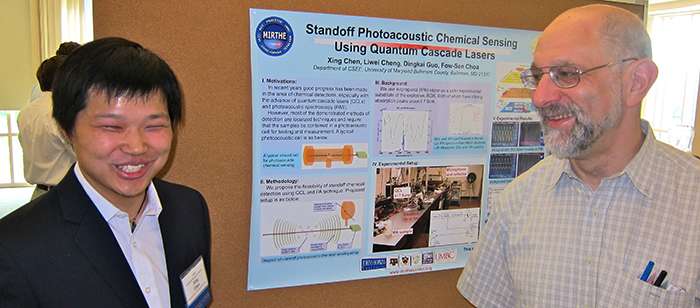
UMBC’s 37th Annual Graduate Research Conference will take place between 9:00am and 5:00pm on Wednesday, 25 March 2015. The GRC program includes both oral and poster presentations, lunch and a keynote panel, a research information fair and a reception. The event is free, but online registration is requested.
Here is a summary of the presentations from Computer Science and Electrical Engineering students. See the GRC program for abstracts and a complete list of presentations and posters from all UMBC graduate programs.
Session I 9:00am-10:15am in UC 312
- Prajit Das – Computer Science
FaceBlock: Semantic Context-Aware Privacy for Mobile Devices - Ari Rapkin Blenkhorn – Computer Science
Real-time GPU Rendering of Atmospheric Glories - Tanmay Kulkarni – Electrical Engineering
Palladium Nanowire Based Enzymatic Biofuel Cell - Robert Weiblen – Electrical Engineering
Increased Laser Damage Threshold in As2S3 Motheye Structures - Muhammad Rahman – Computer Science
Semantic Information Extraction from RFP Documents
Session II 10:30am-11:45am in Commons 329
- Muhammad Rahman – Computer Science (Oral Presentation)
Open Information Extraction and Topic Modeling on Academic Profiles - Vladimir Korolev – Computer Science (Oral Presentation)
PROB: A Tool for Tracking of PRovenance of Big data Computational Experiments - Jennifer Sleeman – Computer Science (Oral Presentation)
Improving Entity Disambiguation for Wild Big Data Through Contextualization and FineGrained Entity Type Recognition
Session II 10:30am-11:45am in Sherman Hall 145
- Jon Ward – Electrical Engineering (Oral Presentation)
Distributed Beamforming Relay Selection to Increase Base Station Anonymity in Wireless Sensor Networks - Yin Huang – Computer Science and Electrical Engineering
An Eigensolver for large sparse graph with Accumulo and D4M - Abhay Kashyap – Computer Science (Oral Presentation)
Rapalytics: When Data Science meets Rap! - Zheng Li – Computer Engineering (Oral Presentation)
Tongue-n-Cheek: Non-contact Tongue Gesture Recognition
Session II 10:30am-11:45am in Sondheim 103
- Piyush Waradpande – Computer Science (Work in Progress)
Use of Doppler Radars in Activity Recognition - Genaro Hernandez – Computer Science (Work in Progress)
Toward Category Detection for Physically-Grounded Language - Deepak Krishnankutty – Computer Engineering (Work in Progress)
Multi Vantage Point Analysis of Power Supply Signatures - Jorge Teixeira – Electrical Engineering (Work in Progress)
Advantages and Improvements of BER/WER Performance Evaluation of Error Correcting Codes Using Dual Adaptive Importance Sampling (DAIS)
Session II 10:30am-11:45am, Poster Presentations in Library 7th floor
- Shaokang Wang – Electrical Engineering
Soliton Wake Instability in a SESAM Modelocked Fiber Laser - Isaac Mativo – Computer Science
Clinical Predictive Modeling with Patient Reported Data - Yichuan Gui – Computer Science
A Pairwise Algorithm to Overcome the Local Minimum Problem in Training - David Harris – Computer Science
Developing User Interface Frameworks to Facilitate Usage Amongst Technologically UnderServed Populations - Hsiao-Chi Li – Electrical Engineering
Progressive Band Processing of Orthogonal Subspace Projection in Hyperspectral Imagery - Lisa Mathews – Computer Science
A Collaborative Approach to Situational Awareness for CyberSecurity - Yu Wang – Computer Science
Isosurface Smoothing using Marching Cubes and PN-Triangles - Yue Hu – Electrical Engineering
Impact of the Coulomb Interaction on the Franz-Keldysh Effect in a High-Current Photodetector - Hadis Dashtestani – Computer Science
Massively Distributed Online Neuroscience for Improving Virtual Experience
Session III 1:45pm-3:00pm, Poster Presentations in UC 312
- Bryan Wilkinson – Computer Science
A Resource for Evaluating Adjective Scales - Adam Price – Computer Science
Big Data Analytics for Expanding Alice Analysis for the United States - Seyed Ehsan Jamali Mahabadi and Yue Hu – Electrical Engineering
Gain Recovery in Quantum Cascade Lasers - Brian Stevens – Computer Engineering
Characterization of Glucose Responsive Phenylboronic Acid-Based Hydrogel Using Optical Coherence Tomography
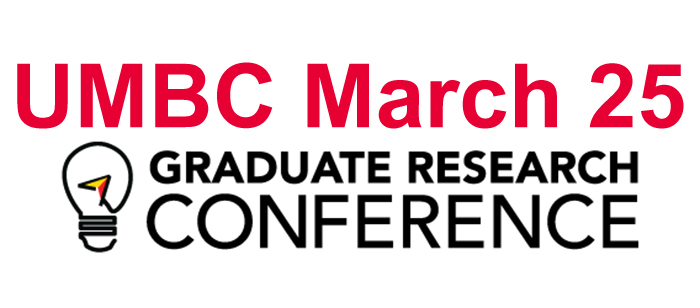
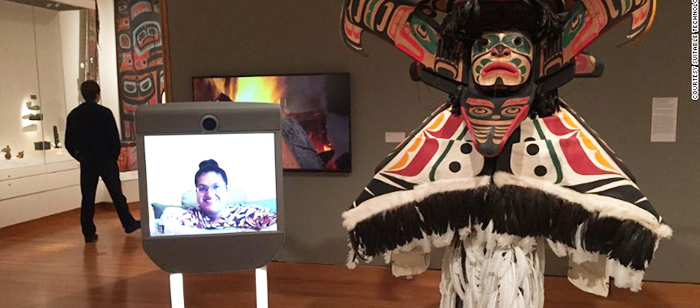
 For example she presented her
For example she presented her 